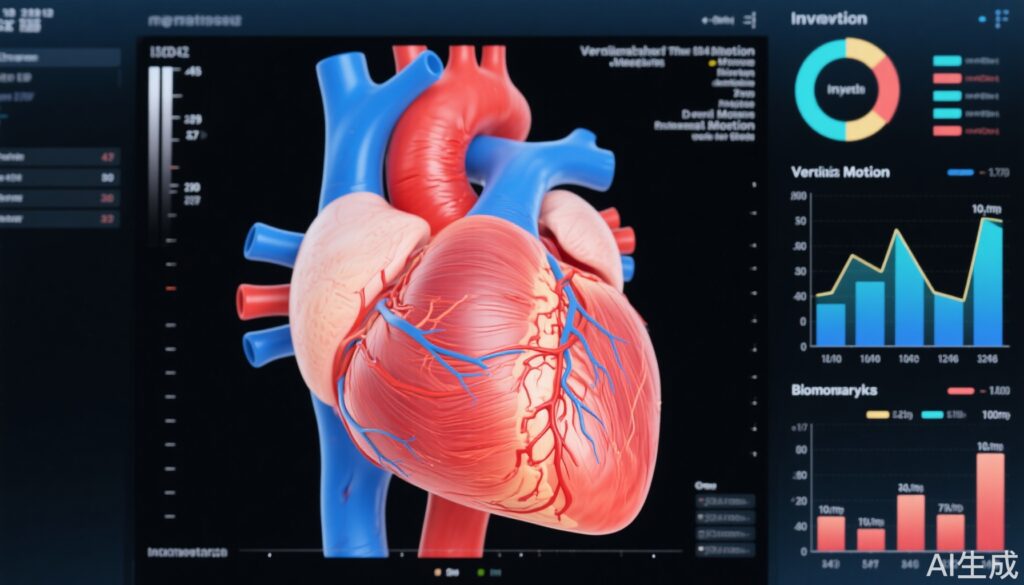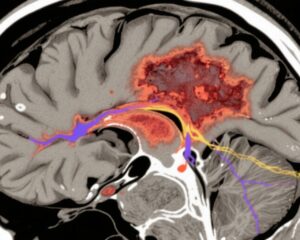Study Background and Disease Burden
Transthyretin amyloid cardiomyopathy (ATTR-CM) is a progressive and life-threatening condition caused by the deposition of transthyretin amyloid fibrils in cardiac tissue. This pathogenic amyloid accumulation leads to restrictive cardiomyopathy, impaired cardiac function, and ultimately high morbidity and mortality. Despite advances in diagnosis, the therapeutic options remain limited, and there is considerable unmet medical need for effective disease-modifying treatments. The HELIOS-B clinical trial evaluated vutrisiran, an RNA interference (RNAi) therapeutic targeting transthyretin production, as a promising approach to mitigate disease progression in patients with ATTR-CM over a prolonged period.
Study Design
HELIOS-B was a randomized, double-blind, placebo-controlled trial enrolling 655 patients diagnosed with ATTR-CM, predominantly of wild-type transthyretin (88%) and median age 77 years, with a strong male predominance (93%). Patients were randomized 1:1 to receive either subcutaneous vutrisiran 25 mg every 12 weeks or placebo for a maximum of 36 months. Echocardiographic assessments were performed at baseline and at regular intervals (months 12, 18, 24, and 30) to monitor cardiac structure and function. The primary endpoint was a composite of all-cause mortality and recurrent cardiovascular events. Secondary endpoints included mortality through 42 months and prespecified exploratory analyses involving cardiac biomarkers NT-proBNP and troponin I.
Key Findings
The study revealed several critical insights into the prognostic significance of echocardiographic measures and cardiac biomarkers, as well as the therapeutic impact of vutrisiran.
Echocardiographic Parameters and Clinical Outcomes
Baseline echocardiographic metrics encompassing left and right ventricular systolic and diastolic function were independently associated with the primary composite outcome. Notably, higher left ventricular ejection fraction (LVEF) and absolute global longitudinal strain correlated with reduced risk, while increased average E/e’ ratio, an index of diastolic dysfunction, was linked to higher risk. Specifically, a 5% increase in LVEF was associated with a hazard ratio (HR) of 0.90 (95% CI: 0.86-0.95), and a 1% increase in global longitudinal strain showed an HR of 0.92 (95% CI: 0.89-0.96). These associations persisted after adjustment for confounding factors including age, sex, ATTR type, and disease stage per the National Amyloidosis Centre.
Vutrisiran Effects on Cardiac Function
Over 18 months, patients treated with vutrisiran experienced attenuation of decline in cardiac function, as measured by LVEF, global longitudinal strain, and tricuspid annular systolic myocardial velocity (TASV). The least-squares mean difference comparing vutrisiran to placebo indicated a 1.6% preservation in LVEF (95% CI: 0.1-3.2), a 0.7% improvement in strain (95% CI: 0.3-1.2), and a 0.5 cm/s gain in TASV (95% CI: 0.1-0.9). Worsening of these parameters was associated with increased risk of the primary outcome, supporting their relevance as surrogate markers.
Biomarker Dynamics and Prognostic Value
Baseline and evolving levels of NT-proBNP and troponin I were highly predictive of clinical outcomes. Elevated baseline levels independently predicted greater risk of mortality and cardiovascular events (P < 0.0001). At 6 months, an increase in NT-proBNP predicted higher risk, whereas decreases in troponin I were associated with lower risk.
By 30 months, the median NT-proBNP had increased markedly in the placebo group (753 pg/mL) compared to a modest change (118 pg/mL) in the vutrisiran group. For troponin I, placebo recipients had a median increase of 9.7 pg/mL, while vutrisiran recipients showed a median decrease of 5.8 pg/mL. The geometric mean fold-change ratios comparing vutrisiran to placebo were 0.68 for both biomarkers (P < 0.0001), indicating sustained biomarker stabilization or reduction with treatment.
Expert Commentary
The HELIOS-B results advance the understanding of ATTR-CM management by linking improved cardiac function and biomarker profiles with clinical outcome benefits from vutrisiran. The robust associations between biventricular echocardiographic function parameters and outcomes underscore the utility of these measures for risk stratification beyond established staging systems.
Vutrisiran’s mode of action as an RNAi therapeutic that suppresses transthyretin production provides a biologically plausible mechanism for the observed improvements, potentially slowing amyloid fibril deposition and cardiac toxicity. Importantly, the preservation of both left and right ventricular systolic and diastolic function aligns with the multifaceted cardiac involvement in ATTR-CM.
While the trial included a predominantly older, male population with wild-type disease, limiting generalizability to hereditary forms or younger patient groups, the consistency across subgroups and adjustment for tafamidis use strengthens the clinical relevance.
The integration of biomarker monitoring further enables early identification of at-risk patients and the tracking of therapeutic response, supporting a paradigm shift towards earlier intervention to mitigate disease progression.
Conclusion
HELIOS-B establishes vutrisiran as an effective disease-modifying therapy that improves cardiac structure and function and favorably alters biomarker trajectories, culminating in reduced all-cause mortality and cardiovascular events in patients with transthyretin amyloid cardiomyopathy. Echocardiographic and biomarker measures provide valuable prognostic information and surrogate endpoints for assessing therapeutic efficacy.
This study underscores the critical importance of early treatment initiation in ATTR-CM and offers a promising avenue for improving the natural history of this devastating disease. Additional research is warranted to explore long-term outcomes, efficacy in broader patient populations, and comparative effectiveness with other emerging therapies.
References
Jering KS, Fontana M, Skali H, et al. Effects of Vutrisiran on Cardiac Function and Outcomes in Patients With Transthyretin Amyloidosis With Cardiomyopathy. J Am Coll Cardiol. 2025;86(6):444-455. doi:10.1016/j.jacc.2025.06.022
Maurer MS, Berk JL, Damy T, et al. Impact of Vutrisiran on Cardiac Biomarkers in Patients With Transthyretin Amyloidosis With Cardiomyopathy From HELIOS-B. J Am Coll Cardiol. 2025;86(6):459-475. doi:10.1016/j.jacc.2025.04.055


